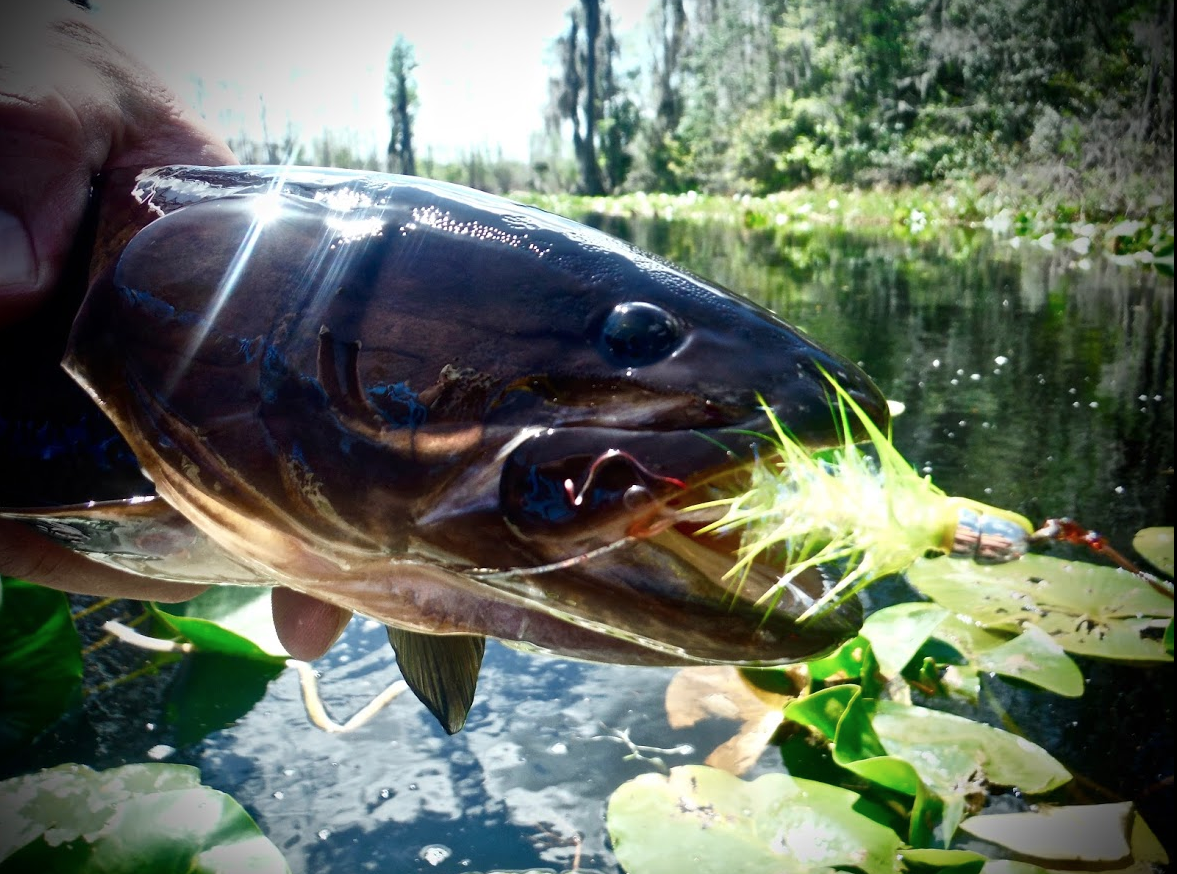Photo by Chris Hunt
By Chris Hunt
< p dir="ltr">There’s something primal about dark water shrouded by cypress.
The color of strong coffee, these stained swamps of the South nurture mystery and offer refuge to critters that hang on in acid-tinged water filtered through layers of eons-old peat and sand.
The gators come to mind first. In South Georgia’s Okefenokee Swamp, they outnumber human visitors on any given day—the National Wildlife Service that manages this place of primordial wilderness claims there are about 12,000 American alligators in this 628 square-mile wilderness. Some of the locals think the number is about twice that. Do the math. Depending on which number you believe to be more accurate, there are anywhere between 20 and 40 gators per square mile of swamp.
That’s a lot of teeth.
But they aren’t the only teeth. The swamp is home to a native smorgasbord of fangs and incisors. Wild pigs live in the swamp, as do river otters, bobcats, black bears and rumors of Florida panthers persist, but officials are skeptical.
The fish, too, have pretty impressive dental work. Pickerel, the smaller, warm-water version of pike, swim these black waters, as do Florida gar. And then there’s the bowfin, a toothy prehistoric leftover from the Jurassic era that a good friend of mine describes as “a fish you’ll lip only once.”
Bowfin are underappreciated by the angling crowd, largely because nobody has found a reliable recipe that makes their flesh palatable. And, despite the complete lack of mud in the Okefenokee (the bottom consists of a 12-foot layer of peat resting atop white sand that used to be the ocean floor), the locals simply call them “mudfish.”
One of the local docents at the Okefenokee Wildlife Refuge was quick to offer up his take on this plentiful swamp denizen. “Hell, man,” he said with a deep Georgia drawl. “You can drop a line almost anywhere in here and catch a damned mudfish.”
Music to my fly fishy ears.
But “mudfish?” Surely we can do better.
“How about cypress trout?” he asked. “Some people call ‘em that.”
Cypress trout. Yes. That dog’ll hunt.
And these watery “dogs” do, indeed, hunt. Arriving after a cold front had blown through and chilled the swamp’s waters, I wasn’t able to tease up any of the Okefenokee’s more “heralded” game fish, like the flier or the warmouth. But the cypress trout were definitely on the prowl. They destroyed sturdy Clousers on heavy-gauge hooks and gulped down maribou streamers like candy.
And they fought and battled and tussled. They rocketed from the water and dove under down logs and wrapped bite tippet around cypress knees. They beat the hell out of my 5-weight under gorgeous sunny Georgia skies.

Photo by Chris Hunt
And with every fish I brought to hand, I marveled at the sheer solitude I was enjoying. There, in the gator-filled quagmire of the swamp, with lily pads and peat “blow-ups” demarking navigable water among tall, second-growth cyprus, I was the only guy fly fishing. And if there is a fish that is fly-rod friendly, it is the mud- … er… cyprus trout. Occasionally, some gear anglers would float by and ask what I was catching. When I told them, they turned their noses up.
“You can’t eat those mudfish, you know, right?” I’d smile and nod and just cast again.
I took the advice from my docent friend when it came to fly selection.
“Any color will work,” he said. “As long as it’s yellow.”
Heavy flies fished deep did the trick, and I lost count of the fish I brought to the boat. They ranged from a pound to a couple that probably pushed five pounds. I’ve seen photos of massive bowfin—30 inches long at least—taken from the swamp, but I never tangled with one that big.
Every fish hooked and landed attracted attention from the gators. So I moved around a lot. I explored. I roamed the creeks and canals of the swamp and wore my arms out on a Southern garbage fish that inspired a return visit—I’m headed back next spring to tangle with the cypress trout once again.
And, yes. I know you can’t eat them. Thinking about it, that’s probably a good thing for me.
Chris Hunt is the national digital director for Trout Media. He lives and works in Idaho Falls.



